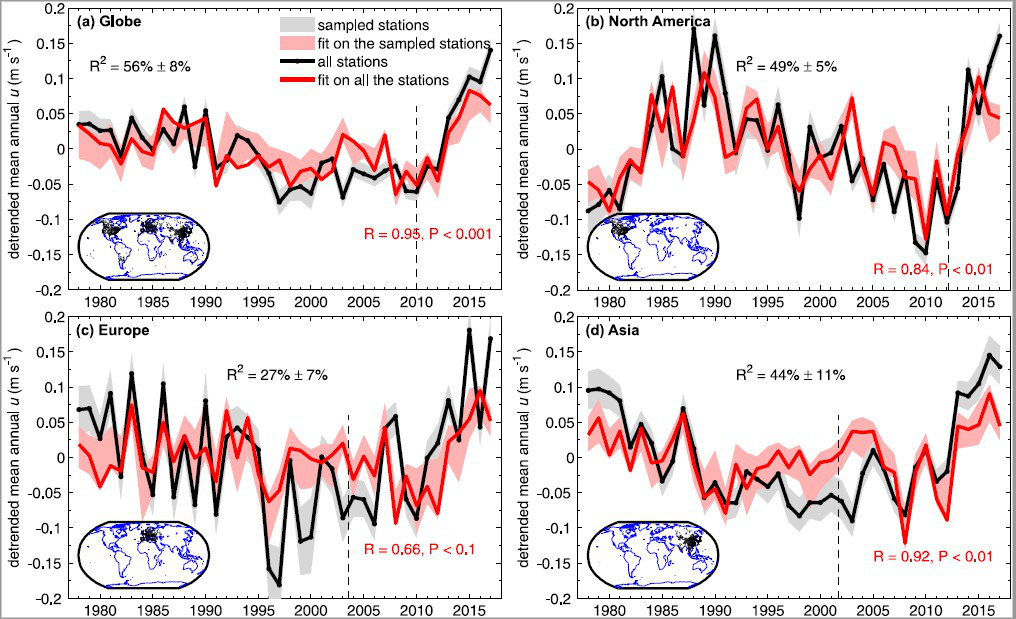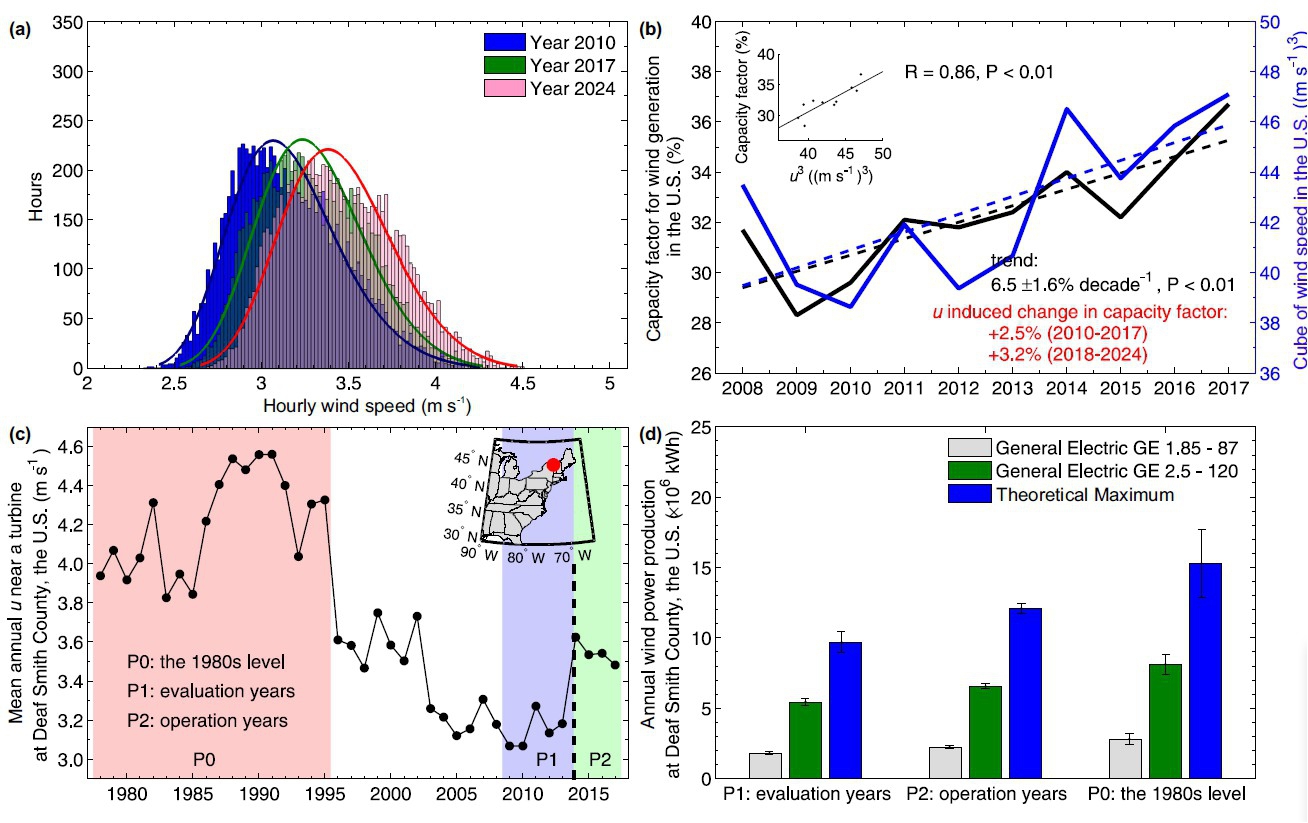Winds of Change: faster wind speeds over land spells good news for all
Recently, Associate Professor Zhenzhong Zeng from the School of Environmental Science and Engineering at Southern University of Science and Technology (SUSTech), and his collaborators have made important progress in global change regarding terrestrial windspeed changes that were published in Nature Climate Change(IF= 25.170).

According to the global surface observation network, global wind speeds over land has been falling steadily since 1960, known as “global terrestrial stilling”. Global terrestrial stilling will seriously affect the efficiency of wind turbine power generation. Previous studies have suggested that global wind speed will continue to decline in the coming decades.
In their paper, Zeng and his collaborators discovered for the first time that after decades of global terrestrial stilling, global wind speeds over land reversed in around 2010, presenting a sharp upward trend, and recovered to levels around 1980 in a short span of eight years. The recent growth rate is three times the pre-2010 rate of decline, with North America, Europe and Asia showing the most marked changes.
The team also examined potential causes underlying global terrestrial stilling and its reversal. Previous studies had suggested a correlation with increased terrestrial roughness caused by urbanization and/or vegetation changes. However, Zeng et al. (2018 Environmental Research Letter) rejected the hypothesis of vegetation growth and change before analyzing the impact of urbanization and rejected this hypothesis. Zeng and his global collaborators have found that the variation in wind speed is determined mainly by driving forces associated with decadal variability of large-scale ocean/atmospheric circulations rather than increases in surface roughness.

If the present trend persists for at least another decade, power generated by wind turbines could increase by 37% by 2024, resulting in a +3% per decade increase of global-average capacity factor (mean power generated divided by rated peak power). This change is even larger than the projected change in wind power potential caused by climate change under multiple scenarios.
These research results are of great value to the global wind energy field, as they will be conducive to the development of the industry, developing wind energy into a major pillar of renewable energy. This paper provides a road map for further verification of the dynamic mechanisms, in order to improve the simulation of surface wind speeds according to IPCC climate models and weather models.

The lead and the corresponding author is Dr. Zhenzhong Zeng (Southern University of Science and Technology, Princeton University). The collaborators include Alan D. Ziegler at National University of Singapore, Timothy Searchinger and Eric. F. Wood at Princeton University, Long Yang at Nanjing University, Anping Chen at Colorado State University, Kunlu Ju at Tsinghua University, Shilong Piao at Peking University, Laurent Z. X. Li at Centre National de la Recherche Scientifique, Philippe Ciais at Laboratoire des Sciences du Climat et de l’Environnement, Deliang Chen at University of Gothenburg, Junguo Liu at Southern University of Science and Technology, Cesar Azorin-Molina at Centro de Investigaciones sobre Desertificación, Adrian Chappell at Cardiff University, and David Medvigy at University of Notre Dame.
The research is supported by the following funding: the Strategic Priority Research Program of Chinese Academy of Sciences, the start-up fund provided by Southern University of Science and Technology and Lamsam-Thailand Sustain Development, Lamsam-Thailand Sustain Development, the National Key Research and Development Program of China, and National Natural Science Foundation of China.
The link of the paper: https://www.nature.com/articles/s41558-019-0622-6.
